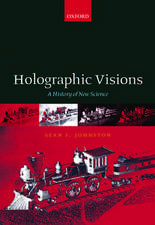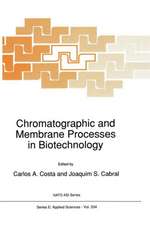Scaling Up: The Institution of Chemical Engineers and the Rise of a New Profession: Chemists and Chemistry, cartea 20
Autor Colin Divall, Sean F. Johnstonen Limba Engleză Hardback – 28 feb 2001
Din seria Chemists and Chemistry
- 18%
 Preț: 1227.36 lei
Preț: 1227.36 lei - 18%
 Preț: 950.96 lei
Preț: 950.96 lei - 18%
 Preț: 1232.71 lei
Preț: 1232.71 lei - 18%
 Preț: 1821.95 lei
Preț: 1821.95 lei -
 Preț: 384.86 lei
Preț: 384.86 lei - 20%
 Preț: 583.70 lei
Preț: 583.70 lei - 15%
 Preț: 587.02 lei
Preț: 587.02 lei - 18%
 Preț: 949.42 lei
Preț: 949.42 lei - 18%
 Preț: 1392.46 lei
Preț: 1392.46 lei - 18%
 Preț: 1226.60 lei
Preț: 1226.60 lei - 18%
 Preț: 1225.62 lei
Preț: 1225.62 lei - 18%
 Preț: 1231.64 lei
Preț: 1231.64 lei - 18%
 Preț: 950.66 lei
Preț: 950.66 lei -
 Preț: 389.31 lei
Preț: 389.31 lei - 18%
 Preț: 1834.10 lei
Preț: 1834.10 lei - 15%
 Preț: 653.46 lei
Preț: 653.46 lei - 18%
 Preț: 949.90 lei
Preț: 949.90 lei - 18%
 Preț: 953.20 lei
Preț: 953.20 lei - 18%
 Preț: 950.33 lei
Preț: 950.33 lei - 18%
 Preț: 1229.10 lei
Preț: 1229.10 lei
Preț: 650.86 lei
Preț vechi: 765.72 lei
-15% Nou
Puncte Express: 976
Preț estimativ în valută:
124.55€ • 133.18$ • 103.84£
124.55€ • 133.18$ • 103.84£
Carte tipărită la comandă
Livrare economică 17 aprilie-01 mai
Preluare comenzi: 021 569.72.76
Specificații
ISBN-13: 9780792366928
ISBN-10: 0792366921
Pagini: 350
Ilustrații: XXVIII, 350 p.
Dimensiuni: 155 x 235 x 22 mm
Greutate: 0.71 kg
Ediția:2001
Editura: SPRINGER NETHERLANDS
Colecția Springer
Seria Chemists and Chemistry
Locul publicării:Dordrecht, Netherlands
ISBN-10: 0792366921
Pagini: 350
Ilustrații: XXVIII, 350 p.
Dimensiuni: 155 x 235 x 22 mm
Greutate: 0.71 kg
Ediția:2001
Editura: SPRINGER NETHERLANDS
Colecția Springer
Seria Chemists and Chemistry
Locul publicării:Dordrecht, Netherlands
Public țintă
ResearchCuprins
1: Introduction: An elusive profession.- 2: ‘... That doubtful and indescribable person, the chemical engineer ... ’.- 3: Catalysing an identity, 1915–1925.- 4: Designing professionals.- 5: Dampened aspirations.- 6: Rapid expansion.- 7: Unstable equilibrium.- 8: Institution versus profession.- 9: Conclusions: Distilling an identity.- Appendices.- Early organisers of chemical engineering in Britain.- Institutional statistics.- Comparative membership growth.- IChemE membership by grade.- Female membership.- Professional affiliations.- Membership by employment sector.- Qualifications versus time.- Institutional organisation.- Regional branches of the IChemE.- Subject groups of the IChemE.- Teaching statistics.- Chemical engineering programmes and chairs in British teaching institutions.- Annual production of chemical engineers in Britain.- Occupational statistics.- Census returns.- Salaries.- The literature of chemical engineering.- Structure, content and role.- Periodicals.- Note on archival sources.- Periodicals employed as primary sources.- Other published works.
Recenzii
`Scaling Up is an excellent history of the chemical engineering profession in Britain and the development and growth of the Institution of Chemical Engineers. It is well laid out and the text is generally easy to read. Overall, it is a highly recommended book for anyone interested in the history of Chemical Engineering.'
Bulletin for the History of Chemistry, 27:1 (2002)
Bulletin for the History of Chemistry, 27:1 (2002)

















